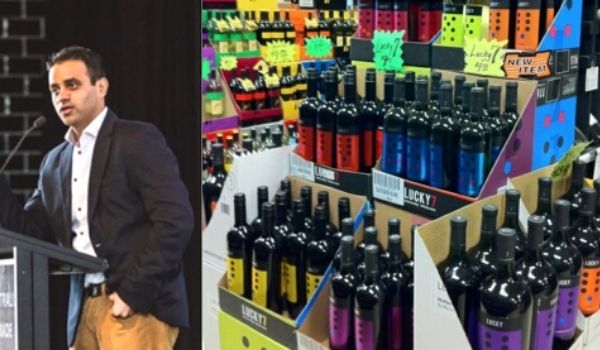Super Early Bird Deadline
October 31, 2025
Judging
Date
May 18, 2026
Winners
Announced
June 10, 2026

“Making wine is an art NOT a Business. Be an artist that time and produce the best art. Selling wine is business NOT an art. Have a business mindset and not the mindset of an artist.” A lot of people get it the other way or mix it and that’s why they struggle. Treat both roles separately - don’t mix them. This mindset will allow you to scale your wine distribution.
Here are some tips from Sid Patel, founder, and CEO of Beverage Trade Network and Sommeliers Choice Awards on how to increase your depletion rate and grow your repeat business.

Sid’s own wine brand ‘Lucky 7’ which was one of his own private labels brand among 10 other private label brands that he had. Coming from a background of beverage brand building and having been in the wine industry working with distributors and Importers, we know that it all boils down to one thing: How your brand is performing at the retail.
In the context of this, we define depletion as units sold at retail to the end consumer. Thus how much of your wine, beer or spirits was actually sold from the retailer to its customer. Depletions can then be further calculated in total cases, total bottles, depletion rate (qty vs days), depletion unit breakdown so you can see which skus are performing better and which are not, depletion by accounts, so you can see what is selling where. Depletion by reps, so you can see which sales reps are moving which skus.
Your strategy should be focused on depletion of your stock from the retailer - Not from your importer, not from your distributor but FROM THE RETAILER.
1. I would encourage suppliers to step out of the office (winery/brewery/distillery) and spend as much time as they can to make sure that their brand is moving at the retail level. Support your distributor to ensure that the brand moves well during the launch phase. Build a follow-up program to ensure that the numbers are going up (for at least the first 6 months).
2. If you focus on how your brands are performing at the retail level and work with your distributor and import partners in your launch months, it will help you build your brand more effectively. The market feedback that you will gather will help you educate your own team and prepare you for your next distributor call when you can show them “why your brand works”.
3. New suppliers often see their distributors as one-time customers and do not care much after the first PO. What is important is to be long-sighted and see the 3rd PO from your wholesaler. In the real world, most of the brands only get one chance to be in front of a retailer or on a retailer’s shelves. As a brand owner, you want to make sure that chance is fully capitalized. (Read our article on "Beyond 1000 cases" for more on this.
4. An effective way to deplete your brand at the retail level is to hold “In-Store” tastings
5. Point of Sale: You may feel that this is an overhead, but selling never stops. Once your brands are in stores, you have to worry about how you can move them. Your retailers must sell through. Small things like case cards and shelf talkers help and colored cartons go a long way. It also makes it easy for retailers to locate your brand in their storage stockpile.
6. Creating secondary displays are important profit centers for small companies. For example find new spots like ‘the refrigerator’. If you have whites, put them there.
7. Floor Displays: Creating secondary displays are important profit centers for small companies. Floor Displays are one of the most effective retail merchandising strategies available for showcasing your brand.
8. Ask your distributor for a depletion report. Analyze this report and pick out some non-performing stores to understand why the product is not working for them and if you can hold tastings to help them push sales. Ask top performing retailers for store displays to maximize sales opportunities here.
9. Signage and Guiding the Customer Journey: Use floor decals if retailers allow you.The best signage, of course, doesn’t just help customers find what they’re looking for but also inspires them to want something they never knew they needed.
10. Creating urgency: Create incentives around the sales reps, retailers and retailers’ sales staff. Create incentives on depletion rates. For example reward them if they move x number of wine cases in x days.
11. Say Hello to the retailer in person: go out on the road alone and say to the retailer “I wanted to thank you for keeping my wine”. This does go a long way. If they had a choice, they will always recommend your wine as you are the likable supplier.
I would like to end this again that nothing will happen if you don’t have the culture of depletion. Talk as much on depletion at retail with your export managers, with your distributors, with your sales reps and you will build a long term repeat business for your wine, beer or spirits brand.
Enter your Wines now and get in front of top Sommeliers, Wine Directors, and On-Premise Wine Buyers of USA.
